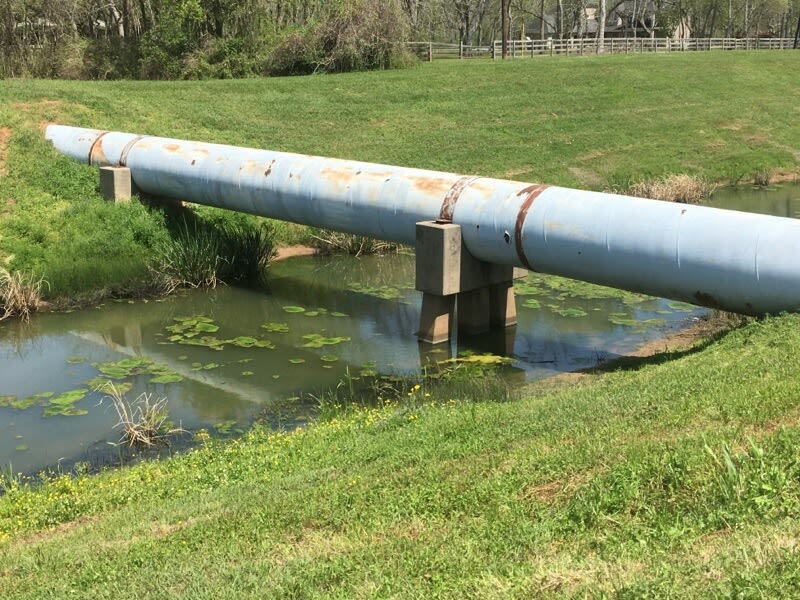JoelTXCive
Civil/Environmental
We have an existing 60" steel pipe that conveys excess rainwater across a ditch. We are going to widen the ditch and expose more of the pipe. (We are also adding another bentcap to support the pipe)
The pipe was installed in 1986 and I do not think it has been painted since then. (see below photo)
Since we are making other modifications to the pipe; now might be a good time to paint it. Also, I have no idea what the buried portion of the pipe looks like.

My questions are: (sidenote: I'm the structural guy and know very little about painting, but have been roped into this project)
1) What level surface preparation should we specify? SSPC SP-6 Commercial Blast Cleaning?
2) What type of paint? Here is our typical paint callout: "PIPE TO BE PAINTED WITH TNEMEC SERIES FC22 EPOXOLINE OR APPROVED ALTERNATIVE. (100% SOLIDS EPOXY RATED FOR IMMERSION SERVICE 20 MILS DFT)"
Thank you in advance for any tips.
The pipe was installed in 1986 and I do not think it has been painted since then. (see below photo)
Since we are making other modifications to the pipe; now might be a good time to paint it. Also, I have no idea what the buried portion of the pipe looks like.

My questions are: (sidenote: I'm the structural guy and know very little about painting, but have been roped into this project)
1) What level surface preparation should we specify? SSPC SP-6 Commercial Blast Cleaning?
2) What type of paint? Here is our typical paint callout: "PIPE TO BE PAINTED WITH TNEMEC SERIES FC22 EPOXOLINE OR APPROVED ALTERNATIVE. (100% SOLIDS EPOXY RATED FOR IMMERSION SERVICE 20 MILS DFT)"
Thank you in advance for any tips.
